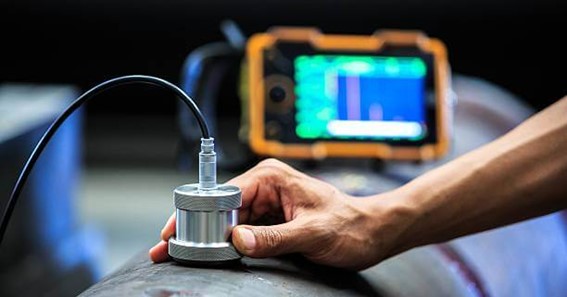Ultrasonic testing is a powerful technique that revolutionizes non-destructive inspection across various industries. By utilizing high-frequency sound waves, this method allows for accurate and efficient detection of flaws, defects, and irregularities in materials and structures without causing any damage. In this article, we will explore the benefits of ultrasonic testing and how it has transformed the field of non-destructive inspection.
Precise Detection and Measurement: Ultrasonic testing enables precise detection and measurement of flaws and defects within materials. By transmitting ultrasonic waves into the material and analyzing the reflected waves, inspectors can identify cracks, voids, thickness variations, and other internal irregularities. The method provides accurate measurements, allowing for detailed assessment of material integrity and the identification of potential weaknesses.
Wide Range of Applications: Ultrasonic testing is highly versatile and applicable to a wide range of materials and components. It can be used to inspect metals, plastics, composites, ceramics, and even concrete structures. This versatility makes it a valuable tool in industries such as manufacturing, aerospace, automotive, energy, and construction. Whether it’s assessing the integrity of welds, detecting corrosion, or evaluating the thickness of pipes, ultrasonic testing offers a reliable and efficient solution.
Click Here –Upscale Images Up to 8X Times Using VanceAI Image Upscaler
Fast and Efficient Inspection: One of the key advantages of ultrasonic testing is its speed and efficiency. Inspectors can perform inspections quickly, even on large structures or complex components. The real-time imaging capabilities of modern ultrasonic testing equipment allow for immediate analysis of the test results. This saves time and enables prompt decision-making regarding repairs, maintenance, or further investigations.
Non-Destructive Nature: As a non-destructive testing method, ultrasonic testing ensures that the inspected materials or structures remain intact and undamaged during the inspection process. This is particularly valuable when dealing with critical components or structures where preserving the integrity is essential. The non-destructive nature of ultrasonic testing allows for repetitive inspections over time, ensuring continuous monitoring and assessment of the material condition.
High Sensitivity and Accuracy: Ultrasonic testing is known for its high sensitivity and accuracy in detecting even the smallest flaws or defects. The method can identify internal defects that are not visible to the naked eye, such as microcracks or delaminations. By employing advanced techniques like phased array or time-of-flight diffraction, ultrasonic testing can provide detailed imaging and precise flaw sizing. This level of sensitivity allows for proactive maintenance and repair, preventing failures and enhancing safety.
Compliance with Standards and Regulations: Ultrasonic testing is widely recognized and accepted as a reliable inspection method in various industries. It conforms to international standards and regulations, ensuring compliance and providing a benchmark for quality and safety. Industries such as aerospace, nuclear, and oil and gas rely on ultrasonic testing to meet stringent requirements and maintain high levels of safety and reliability.
In conclusion, ultrasonic testing has transformed the field of non-destructive inspection, offering a powerful and reliable solution for detecting flaws, defects, and irregularities in materials and structures. With its precise measurement capabilities, wide range of applications, non-destructive nature, and high sensitivity, ultrasonic testing has become an indispensable tool in industries where safety, reliability, and quality are paramount. By harnessing the power of ultrasonic testing, businesses can enhance their inspection processes, prevent failures, and ensure the integrity of their assets and structures.







